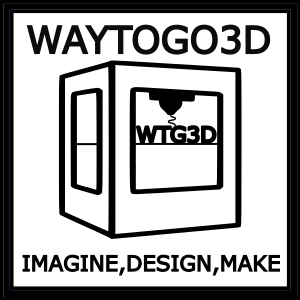CAD Design Services
CAD Rapid Prototyping Packages:
-
Basic Package: £60
- 2 Hours of CAD design.
- Unlimited design iteration within allocated time.
- 1 Printed Model.
- 1 Reprint allowing for design iteration.
** Model size limited to 100x100mm **
-
Standard Package: £120
- 4 hours of CAD design.
- Unlimited design iterations within allocated time.
- Up to 2 Printed models.
- Up to 2 reprints allowing for design iteration.
** Model size limited to 150x150mm **
-
Premium Package: £250
- 8 hours of CAD design.
- Unlimited design iterations within allocated time.
- Up to 4 Printed models.
- Up to 4 reprints allowing for design iterations.
- Additional design time charged at a fixed lowered rate of £15 per hour.
** Model size limited to 240x240mm **
Additional CAD Design Services:
-
Fixed Rate Price: £20 Per hour
- 1 hour minimum time requirement.
- Pay as you go hourly.
-
Reverse Engineering Price: £20 Per hour
- Turn a physical object into a digital copy, depending on the complexity and size of the object determines the amount of hours needed to reverse engineer it.
** Please note that all prices are subject to change. **
Considerations When Designing for FDM Printing:
When CAD designing a model with the intention of 3D printing, several important considerations should be taken into account to ensure successful and optimal results: Open to see more.
1. Design for Additive Manufacturing (DfAM): Optimize the design specifically for the 3D printing process. Consider factors such as overhangs, support structures, and orientation for minimizing printing time and material usage.
2. Geometry and Complexity: Keep the geometry of the model in mind, ensuring that it's suitable for 3D printing. Avoid complex features, sharp corners, and thin walls that may be difficult to print or prone to failure.
3. Wall Thickness: Ensure that the walls of the model have adequate thickness to maintain structural integrity during printing and use. Generally, a minimum wall thickness of 1-2 mm is recommended, depending on the material and printing technology.
4. Support Structures: Consider the need for support structures to prevent overhangs and ensure successful printing of complex geometries. Design the model with self-supporting features whenever possible to minimize the need for supports.
5. Orientation: Determine the optimal orientation of the model for printing to minimize the need for supports and achieve the best surface finish. Consider factors such as overhangs, build plate adhesion, and print bed size when orienting the model.
6. Material Selection: Choose the appropriate material for the intended application, considering factors such as strength, flexibility, temperature resistance, and surface finish. Different materials have different printing requirements and properties, so select the one that best suits your needs.
7. File Format and Resolution: Save the CAD model in a compatible file format such as STL, OBJ, or AMF, ensuring that it preserves the necessary detail and geometry. Consider the resolution of the model to balance file size with printing accuracy.
8. Tolerance and Clearance: Design parts with appropriate tolerances and clearances to ensure proper fit and assembly. Account for factors such as shrinkage, post-processing, and assembly requirements when designing mating parts.
9. Surface Finish and Texture: Design the model with the desired surface finish and texture in mind, considering whether additional post-processing steps such as sanding, polishing, or painting will be necessary.
10. Testing and Iteration: Perform test prints and iterate the design as needed to optimize for printing success and desired performance. Consider factors such as print speed, layer height, and infill density during testing.
By carefully considering these factors during the CAD design process, you can improve the chances of successful 3D printing and achieve optimal results for your project.
